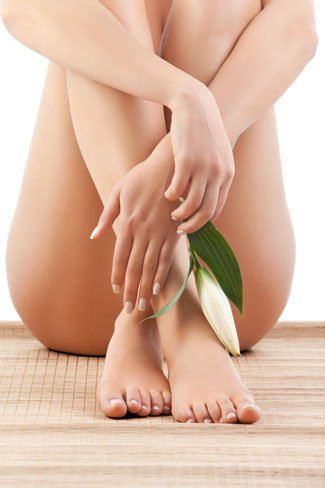It’s hard to find those treatments that are non-surgical and correct more than a few problems. This procedure uses the power of heat to melt away fat under the skin but it also fights a few other things that drive you crazy!
Read about the 3 benefits of Exillis.
It’s hard to find those treatments that are non-surgical and correct more than a few problems. This procedure uses the power of heat to melt away fat under the skin but it also fights a few other things that drive you crazy!
Read about the 3 benefits of Exillis.
Plastic surgery “bridal packages” often include a customized array of body procedures that help prepare brides for their special day.
Find out why more and more brides are saying “I do” before their vows.
Nowadays, you no longer have to go under the knife in order to get the body that you desire. With the fairly recent addition of laser treatments like Exilis Laser, you can now reduce fat and tighten up your skin without any cuts or incisions.
Nowadays, you no longer have to go under the knife in order to get the body that you desire. With the fairly recent addition of laser treatments like Exilis Laser, you can now reduce fat and tighten up your skin without any cuts or incisions.
Should they be allowed in the operating room or not?

The technology at our disposal is growing faster and faster, and we’re basically coming to a point where science fiction is becoming the new hot gadget. Take for example Google Glass; a wearable computer that takes voice commands, records and plays video, and can even connect to the Internet. We’re in Jetsons territory, folks.
(more…)

Breast augmentation has not been outranked as the top cosmetic surgery procedure for six straight years ever since silicone made its strong comeback in 2006. How has this breast enhancement procedure sustained such impressive numbers? Here are some factors that definitely have a huge impact on its success.
 When people tend to decide to get some work done
When people tend to decide to get some work done
With 1.5 million cosmetic procedures were performed last year, it can be easy to overlook that each one of those procedures started with a decision by someone to undergo a cosmetic procedure. Well, what inspired that decision? People get cosmetic surgery for a wide variety of reasons, and that decision shouldn’t be entered into lightly, but here are a few of the more common ones.
Post-Pregnancy
When bringing a baby to term, the body goes through a lot of changes, and doesn’t always end the journey as svelte as it started. It can be extremely hard to get back in shape after a pregnancy, even with the most stringent diet and exercise regiments. That’s why a lot of new moms get what are called Mommy Makeovers – a package deal that can include breast augmentation, liposuction, tummy tucks, and a few other procedures, as the need may arise.
Major Life Changes
There are any number of life changes that might prompt someone to look at cosmetic surgery. On the job hunt again? A facelift to erase wrinkles may help you stand out in a competitive job market. Moving? Could be a chance to reinvent your look to impress new people. Getting married? A little bit of Botox could help you look your best for the big day (for men, too!). A big change, no matter what it is, can get the wheels turning and have people reevaluate their lives, and their looks.
“You think I’m HOW old?”
One of the biggest inspirations for cosmetic touchups, naturally, centres around aging. When we age, we don’t usually notice it ourselves, since it’s a gradual process. But the change can be more noticeable to an outside party, and if they don’t know you, they might assume you’re older than you are, or at least how old you feel inside. This kind of thing can, for some, be a wake-up call that their appearance isn’t as youthful as it once was, and some opt for surgery, or less invasive procedures.
No matter what reason you have for getting work done, your first step should be to set up an appointment with your cosmetic surgeon for a consultation.
- Photo Credit: Wedding Photos by Katsunojiri, on Flickr
A Brief History on the Beginning of Breast Implants

Fifty years ago, the modern breast implants that we use today were just bursting onto the scene. Since then, hundreds of thousands of women a year have made breast augmentation the most popular cosmetic surgery procedure in the United States. This is how breast implants evolved over the past fifty years to arrive where they are at now.
—
THE EARLY STAGES
Breast augmentation is not a new concept. For centuries, people have been trying different things to increase the size, or change the appearance of, their breasts. Some of the earliest breast implants were created from materials like a sponge. We have come a long way since then.
The first silicone implant was introduced in 1962 by Texas doctors, Frank Gerow and Thomas Cronin. Thirty year-old, Timmie Jean Lindsey, was the first human recipient of the new silicone implants. Lindsey recently spoke at the 50th anniversary of silicone implants last year.
Three years later in 1965, a French surgeon, H.R. Arion, introduced the first form of saline implant. Arion’s saltwater-filled implants gained popularity because of their ability to be placed with smaller incisions than silicone implants required.
THE RISE
Breast implants started being mass produced in the 1970s. At this time, many other alternatives began trying to make their way into the breast augmentation game, but these inventions – like inflatable implants – never quite caught on.
The 1980s brought new design changes to silicone and saline implants. Both types received a new, softer external shell.
Health concerns became an issue with silicone implants during the late 80s and early 90s. In January 1992, the FDA banned silicone implants in the United States, which allowed for saline to gain serious popularity.
THE BOOM
Breast augmentation saw a huge popularity boom at the turn of the century. The number of procedures in the US shot from just over 100,000 in 1997 to over 316,000 in 2011.
Everything about breast augmentation has evolved dramatically since its early beginnings. Silicone gel implants are back and more popular than ever with the new FDA approval of silicone gel implants. Surgeries are minimally invasive and have been receiving great patient reviews.
With various different options available to patients, women are more able than ever to achieve the exact look that they desire.
Want to know more about the latest in cosmetic breast surgery?
 Some terms you may hear bandied about
Some terms you may hear bandied about
Every day, new techniques and technology are being devised in the field of cosmetic surgery, and every day, the jargon evolves with it. Here are just a terms that are coming up lately that you might want to know about so you’re not left wondering when they come up during a consultation.
Cookie-Cutter Cosmetic Surgery
When baking cookies, especially themed ones, a cookie cutter can help assure each morsel comes out perfect. This philosophy, however, doesn’t translate over to cosmetic surgery – your body is a unique snowflake, and needs to be approached to your specific needs. A cookie-cutter surgeon is someone who does the same procedure the same way for all patients. When you go for your consultation, try and get a feel if the surgeon is giving you individual attention, and is taking your body into account.
Invasive vs. Noninvasive
Speaking in broad strokes, there are two categories of cosmetic surgery procedures: invasive, and non-invasive. This basically means surgical and non-surgical. Surgical procedures, like breast augmentation or a facelift, will require general anesthesia, and some major recovery time. Noninvasive options, meanwhile, are outpatient procedures that can be done under local anesthesia and require much less recovery time, if any. Such procedures include Botox, microdermabrasion, wrinkle fillers and chemical peels. A surgeon can offer these, but you might also find them available at…
Medispas
A “medispa” is a term that describes a facility that offers your typical spa fare, combined with non-invasive cosmetic procedures like the ones described above. There has been some debate surrounding them, but as long as the person performing these procedures is certified to perform such procedures, risks are minimal. Also, some certified cosmetic surgeons offer medispa options. Make sure the practitioner has the credentials to perform any sort of cosmetic procedure before you agree to anything.
With that, you’re all the more educated for when you research the procedure, and the surgeon, that’s right for you. Best of luck!
- Photo Credit: Dictionary by greeblie, on Flickr

There is a frequently performed surgical procedure in the U.S. that is continuing to receive more and more patient satisfaction by the year – breast augmentation. And for women considering breast augmentation, there are three safety measures you can take to ensure peace of mind before, during and after your surgery.
 For those of us looking for a way to get rid of unwanted hair, laser hair removal has been a popular choice. However, there are also many people biting their lips and wondering: doesn’t laser hair removal hurt?
For those of us looking for a way to get rid of unwanted hair, laser hair removal has been a popular choice. However, there are also many people biting their lips and wondering: doesn’t laser hair removal hurt?
Laser Hair Removal vs. Shaving and Waxing
Well, compared to what exactly? From my own personal experience, I’m not sure how many things could be more uncomfortable than waxing. Although I have yet to experience laser hair removal myself, past patients have been known to give positive feedback and prefer it over alternatives such as waxing. They often describe the pain as mild, comparing it to the sensation of a slight pinch. Oftentimes, this can even be reduced by using a numbing cream before the treatment. If you can tolerate the pain of waxing, laser hair removal will be a breeze and will last a lot longer.
With shaving, areas like the bikini line and the back can be a pain to effectively address, and the more you shave a certain area, the faster and thicker the hair grows back next time. Miss a day and you will already have a little patch of stubble. Also, shaving can often result in irritating cuts and razor bumps that can cause itching and even rashes. Laser hair removal provides a long-term solution to your unwanted hair and easily treat those hard to reach areas that are difficult to get with shaving.
Ready to make the change?
It is important to remember that each case varies based on how thick the patient’s hair is as well as the color. Those with thin, light-colored hair see less discomfort because a darker complexion will grab more light, attracting more heat to the spot.
To sum things up, if you have been wanting laser hair removal but have been putting it off simply due to a fear of intolerable pain, there is truly nothing to be afraid of. However, you must keep in mind that your experience greatly depends on who is giving the treatment! It is important to consult with a skilled cosmetic surgeon with plenty of experience giving the treatment to ensure that you receive the finest care.
 When people tend to decide to get some work done
When people tend to decide to get some work done Some terms you may hear bandied about
Some terms you may hear bandied about